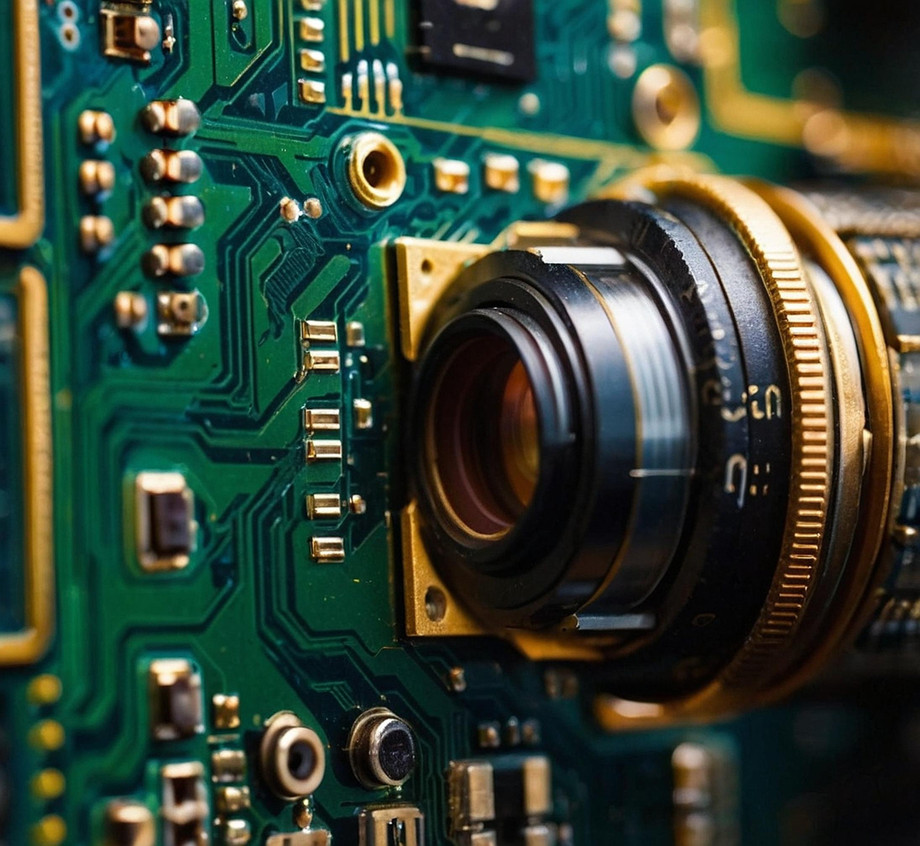In the rapidly evolving automotive industry, camera embedded systems have emerged as pivotal technologies that not only enhance vehicle functionality but also redefine safety and user experience. As manufacturers seek to integrate cutting-edge features into their vehicles, these systems play a crucial role in the development of advanced driver-assistance systems (ADAS), autonomous driving technologies, and improved manufacturing processes. This blog delves into how camera embedded systems are transforming automotive production, offering insights into their benefits, applications, and future potential.
The Rise of Camera Embedded Systems in Automotive Manufacturing
The integration of camera embedded systems in automotive production is driven by the industry's need for enhanced safety and efficiency. Traditional manufacturing processes often lack the precision required to meet today’s stringent safety standards. Camera systems, equipped with advanced image processing capabilities, enable manufacturers to monitor production lines in real time, ensuring quality control at every stage.
In addition, these systems facilitate automated inspections, drastically reducing the likelihood of human error. For example, cameras can detect defects in components or assembly processes, allowing for immediate corrective actions. This not only boosts product quality but also minimizes waste and reduces production costs.
Advanced Driver-Assistance Systems (ADAS)
One of the most significant applications of camera embedded systems is in the development of ADAS. These systems utilize cameras to provide essential functions such as lane departure warning, adaptive cruise control, and parking assistance. The cameras capture high-resolution images and videos of the vehicle's surroundings, processing this information to enhance driver awareness and safety.
Lane Departure Warning and Lane Keeping Assist
Cameras positioned on the front and sides of the vehicle continuously monitor lane markings. When the vehicle begins to drift without signaling, the system alerts the driver through visual and audible warnings. In advanced systems, the camera data can also be used to subtly steer the vehicle back into the lane, significantly reducing the risk of accidents caused by driver distraction or fatigue.
Adaptive Cruise Control
Adaptive cruise control systems rely on cameras to detect the distance to vehicles ahead. By analyzing the speed and trajectory of surrounding traffic, the system can automatically adjust the vehicle's speed to maintain a safe following distance. This technology not only enhances driver convenience but also contributes to fuel efficiency by optimizing acceleration and deceleration patterns.
Enhancing Autonomous Driving Capabilities
The push toward fully autonomous vehicles has intensified the focus on camera embedded systems. These systems serve as critical components of the sensor suite needed for autonomous navigation. By integrating multiple cameras, manufacturers can achieve a 360-degree view of the vehicle's environment, significantly enhancing situational awareness.
Object Detection and Recognition
Camera systems utilize sophisticated algorithms to identify and classify objects, including pedestrians, cyclists, and other vehicles. This capability is essential for autonomous driving, as it enables vehicles to make informed decisions in complex environments. For instance, when a pedestrian enters the crosswalk, the system can assess the situation and decide whether to brake or proceed, prioritizing safety above all.
Applications in Manufacturing Efficiency
Beyond safety features, camera embedded systems are also making waves in automotive manufacturing processes. From automated assembly lines to quality assurance, these systems streamline operations and improve productivity.
Quality Control
In automotive production, quality control is paramount. Camera systems equipped with machine learning algorithms can analyze components for defects that the human eye might miss. By automating this process, manufacturers can ensure that only the highest quality products reach consumers. Furthermore, real-time data analysis allows for rapid adjustments to the production line, minimizing downtime and optimizing efficiency.
Robotics and Automation
Camera embedded systems also enhance the capabilities of robotic systems in manufacturing. Robots equipped with cameras can perform tasks such as welding, painting, and assembly with incredible precision. By leveraging visual feedback, these robots can adapt to variations in the production environment, ensuring consistent quality and efficiency.
Future Trends and Developments
As technology continues to evolve, the future of camera embedded systems in automotive production looks promising. Emerging trends such as artificial intelligence (AI) and machine learning are expected to enhance the capabilities of these systems, allowing for more sophisticated data analysis and decision-making processes.
Integration with Other Technologies
Future developments will likely see the integration of camera systems with other sensor technologies, such as LiDAR and radar, creating a more comprehensive understanding of the vehicle's environment. This multisensory approach will enable manufacturers to develop even more advanced safety features and autonomous driving capabilities.
Enhanced User Experience
As camera systems become more advanced, they will also play a crucial role in enhancing the overall user experience. Features such as augmented reality (AR) can be integrated into navigation systems, providing drivers with real-time information about their surroundings. For instance, a camera could display relevant data about nearby points of interest, making navigation more intuitive and engaging.
Conclusion
Camera embedded systems are revolutionizing automotive production by enhancing safety, improving manufacturing efficiency, and paving the way for autonomous driving. As manufacturers continue to integrate these advanced technologies, the automotive industry is poised for significant transformation. The ongoing developments in camera systems not only contribute to higher quality vehicles but also create a safer, more efficient driving experience for consumers worldwide. Embracing these innovations will be essential for manufacturers looking to remain competitive in an increasingly complex automotive landscape.
To Know More About Camera embedded systems

